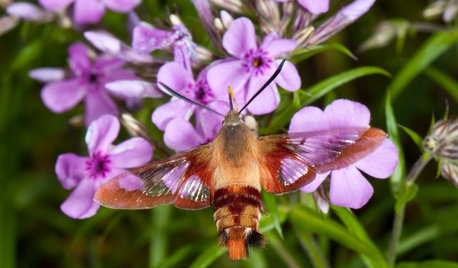Well within the last 3 weeks my husband has found 2 dead NFBs in our furnace room (where I keep many dozens of hippies) and two that were alive that he killed.
This morning I found one upstairs trying to get out the window and this one was a whopper!
I managed to take a couple of pictures before I caught him and loosely wrapped him in Kleenex and then plastic and froze him. I thought I'd get a picture of his size later as this one wasn't crushed.
Earlier in the season I found a hole in one of my EBay # 1 and caught it in time to poke the maggot to death so the bulb will be fine and is still firm.
I found two totally desiccated bulbs of Desire with one small remaining bulb still alive with leaves but the dried ones might be casualties but the others remain to be found. Most of my older bulbs that reside in the furnace room are in pots with 2 or three large offsets so hopefully I won't totally loose any variety but that remains to be seen.
Hopefully the rest of you won't encounter any of these from plants that spend the summer out of doors.
{{gwi:372700}}
{{gwi:372701}}
and the hole that only goes in about 1/2" on the EBay # 1 that I caught early..
{{gwi:372702}}
I've found from past experience it they choose a large bulb to munch away on during the winter that many times the bulb will produce several offsets and eventually you'll get some bulbs back but when they choose a smaller bulb it's usually curtains....
Donna
This post was edited by dondeldux on Mon, Feb 3, 14 at 20:50








Fred Biasella
macroclemys
Related Professionals
East Patchogue Landscape Architects & Landscape Designers · Belvedere Park Landscape Contractors · Deer Park Landscape Contractors · Desert Hot Springs Landscape Contractors · Fort Wayne Landscape Contractors · Longmont Landscape Contractors · Mason Landscape Contractors · Maywood Landscape Contractors · Monterey Landscape Contractors · Rockville Landscape Contractors · Siloam Springs Landscape Contractors · Sun Valley Landscape Contractors · Quartz Hill Landscape Contractors · Merrifield Landscape Contractors · Sunny Isles Beach Swimming Pool Builderskaboehm (zone 9a, TX USA)
dragonstone
blancawing
dondeldux z6b South Shore MassachusettsOriginal Author
kaboehm (zone 9a, TX USA)
dondeldux z6b South Shore MassachusettsOriginal Author
mariava7
kaboehm (zone 9a, TX USA)
dondeldux z6b South Shore MassachusettsOriginal Author
mariava7
salpal
dondeldux z6b South Shore MassachusettsOriginal Author
mariehass
dondeldux z6b South Shore MassachusettsOriginal Author
yellowfingers
dondeldux z6b South Shore MassachusettsOriginal Author
kaboehm (zone 9a, TX USA)
dondeldux z6b South Shore MassachusettsOriginal Author
mariava7
rene09
dondeldux z6b South Shore MassachusettsOriginal Author
mariava7
kaboehm (zone 9a, TX USA)
blancawing
mariava7
blancawing
dondeldux z6b South Shore MassachusettsOriginal Author
kaboehm (zone 9a, TX USA)
Fred Biasella
dondeldux z6b South Shore MassachusettsOriginal Author
dragonstone
mariava7
kaboehm (zone 9a, TX USA)
mariava7
kaboehm (zone 9a, TX USA)
mariava7
Fred Biasella
jstropic (10a)